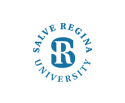Document Type
Article
Abstract
Human immunodeficiency virus (HIV) is one of the world’s biggest health threats. In 2010, 33.3 million adults and children were predicted to be living with HIV/AIDS. Although prevention methods such as abstinence, condoms, and fewer sexual partners will help to lower the number of people infected by HIV, they are not enough. Male circumcision may provide an extra prevention method to acquiring HIV. A correlation between male circumcision and HIV transmission was first discovered in areas in western and northern Africa where the male circumcision prevalence rates tend to be high and HIV prevalence tends to be low. The foreskin of the penis remains largely unkeratinized and thus more prone to microtrauma, tears, and ulcers which could increase the transmission of HIV. The foreskin also plays host to a high concentration of langerhans cells which have been shown to increase HIV transmission. Langerhans cells, which generally aid in immune responses to invading pathogens can bind HIV at a specific receptor site and deliver it to the lymph nodes. The HIV will then proliferate throughout the body. Studies show that male circumcision has the potential to decrease female to male transmission of HIV by 60%. Through mathematical modeling, case studies, and statistical analyses, it was found that male circumcision programs will be effective in lowering HIV incidence, prevalence, and death rates. The acceptability of a male circumcision program is relatively high in Sub-Saharan Africa and most specifically in Southern Africa, which has the highest HIV prevalence rates in the world. The cost-effectiveness and possible mass circumcision program implementation were also examined and found to be positive influences. Male circumcision although useful in preventing HIV, must be used in conjunction only with other HIV prevention methods.
Rights Statement
In Copyright - Educational Use Permitted. URI: http://rightsstatements.org/vocab/InC-EDU/1.0/
This Item is protected by copyright and/or related rights. You are free to use this Item in any way that is permitted by the copyright and related rights legislation that applies to your use. In addition, no permission is required from the rights-holder(s) for educational uses. For other uses, you need to obtain permission from the rights-holder(s).


